-
Girona
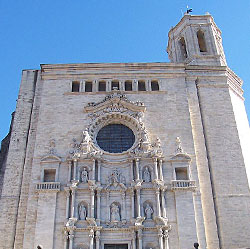
The “call de Girona” is the best preserved a Jew district in Catalonia and one of the most popular in Spain. It was one of the largest communities and the first School of Cabalistes in Spain.
The Cathedral has a baroque style front and gothic style nave. It's the widest European gothic style building . One of the most precious treasure is the Tapestry of Creation (year 1,100). Arab baths . Diocesan Museum . Archaeological Walk and walls . Sant Feliu Church . Sant Pere de Galligans monastery (XII century).
-
Banyoles
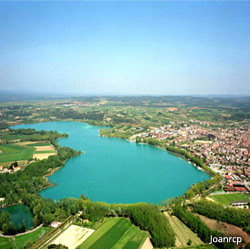
The Banyoles Lake is unique in Catalonia.
It’s the first biggest natural lake in Catalonia.
It’s formed by underground wells, which bring 600 litres of water per second. It’s 1 km2 and it’s 62m deep.
The water from the lake come from Alta Garrotxa (from Sadernes to Oix) where it’s leaked through an underground nets of channels, known as confined aquifer.
-
Besalú
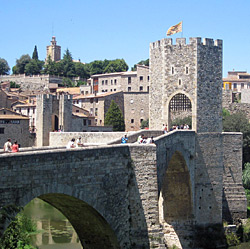
Near Olot, in la Garrotxa, we find this old medieval city with an outstanding Romanic bridge from de XIII century.
The bridge of Besalú is a Romanic bridge with a fortified entrance, crossing the Fluvià river. It is considered as a natural and cultural asset.
Besalú bridge on the river Fluvia, is the result of several reconstructions, renovations, additions and restorations, made over the centuries. The first news we have is from 1075, which mentions a bridge in Besalú.
-
Empúries
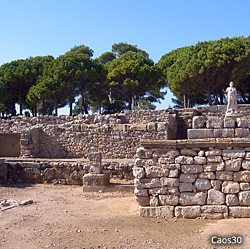
Empúries was an ancient Greek and Roman colony at the most southern part of the Roses Gulf, at the North-East of L’Escala, specifically at the south of Sant Martí d’Empúries.
The spot is one of the main sites of the Archaelogy Museum of Catalonia and the longest archaelogycal excavation in Catalonia. Inside there is the old monastery of Santa Maria de Gràcia d’Empúries almost rebuilt during 1910.
-
Medes Islands
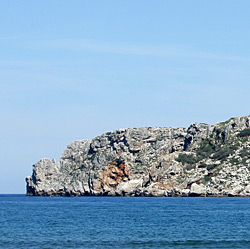
Medes Islands area an archipelago of 21,5 ha in la Costa Brava, less than a km from Estartit.
This archipelago is formed by seven small islands and a reef. The seven reefs are more or less extension: Meda Gran (18.7 ha), Meda xica (2.6 ha) Carall Bernard, Tascons Grossos, the Medellot, Tascons Petits and Ferranelles. The archipelago is in fact the continuation of Montgrí. One of the most important areas of natural interest in the Mediterranean and a large reserve of fauna and flora. They are about 900 meters southeast of the tip of the punta de la Guixera (l'Estartit, Torroella de Montgrí).
-
Figueres
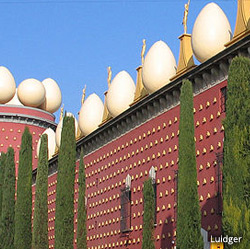
In Figueres there is the Dalí Museum. One of the few museums devoted to artist Salvador Dalí. Paintings, sculptures, jewellery, drawings and prints of the Catalan artist.
The Dalí Museum is in the old Teatre Municipal, built in the XIX century and destroyed at the end of the Spanish Civil War. On these ruins, Dalí decided to built his museum.
-
Castellfollit de la Roca
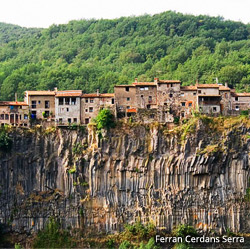
Castellfollit de la Roca is a town in la Garrotxa. It is part of the Natural Park of the Volcanic Zone in la Garrotxa. It is one of the smallest counties in Catalonia. Less than 1 squared km.
The town is located at altitude of 296m and on a basalt cliff. It is more than 50m high and 1 km long. This basalt cliff is the result of the erosive action of rivers Fluvia and Toronell on the volcanic remains of thousands of years ago.
-
Aiguamolls de l'Empordà
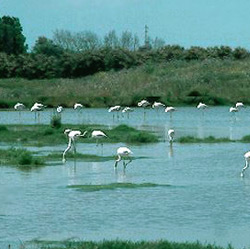
The Aiguamolls de l’Empordà is one of the most important swamps in Catalonia, after the one in Delta de l’Ebre.
The protected area is part of a wider zone which previously occupied l’Empordà and is part of the Natural Parc of the Aiguamolls de l’Empordà.
This group of areas were created by severeal rivers: la Muga and el Fluvià (Alt Empordà) and el Ter and el Daró (Baix Empordà). The Aiguamolls de l’Empordà previously occupied the Roses Gulf and low Ter.
Nowadays, it comprises 4.824ha formed by dunes, salt and fresh lagoons and crops.
-
Sant Pere de Rodes Monastery
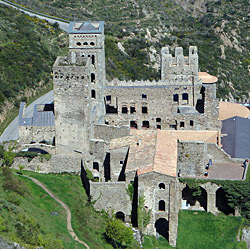
The Sant Pere de Rodes monastery was a Benedictine monastery from Empúries, within the premises of the bishopric of Girona, in Port de la Selva (Alt Empordà) county.
From the ruins of the old monastery you can enjoy an exceptional view over the coast at the Northern part of el Cap de Creus, more specifically el Port de la Selva i Llançà.












